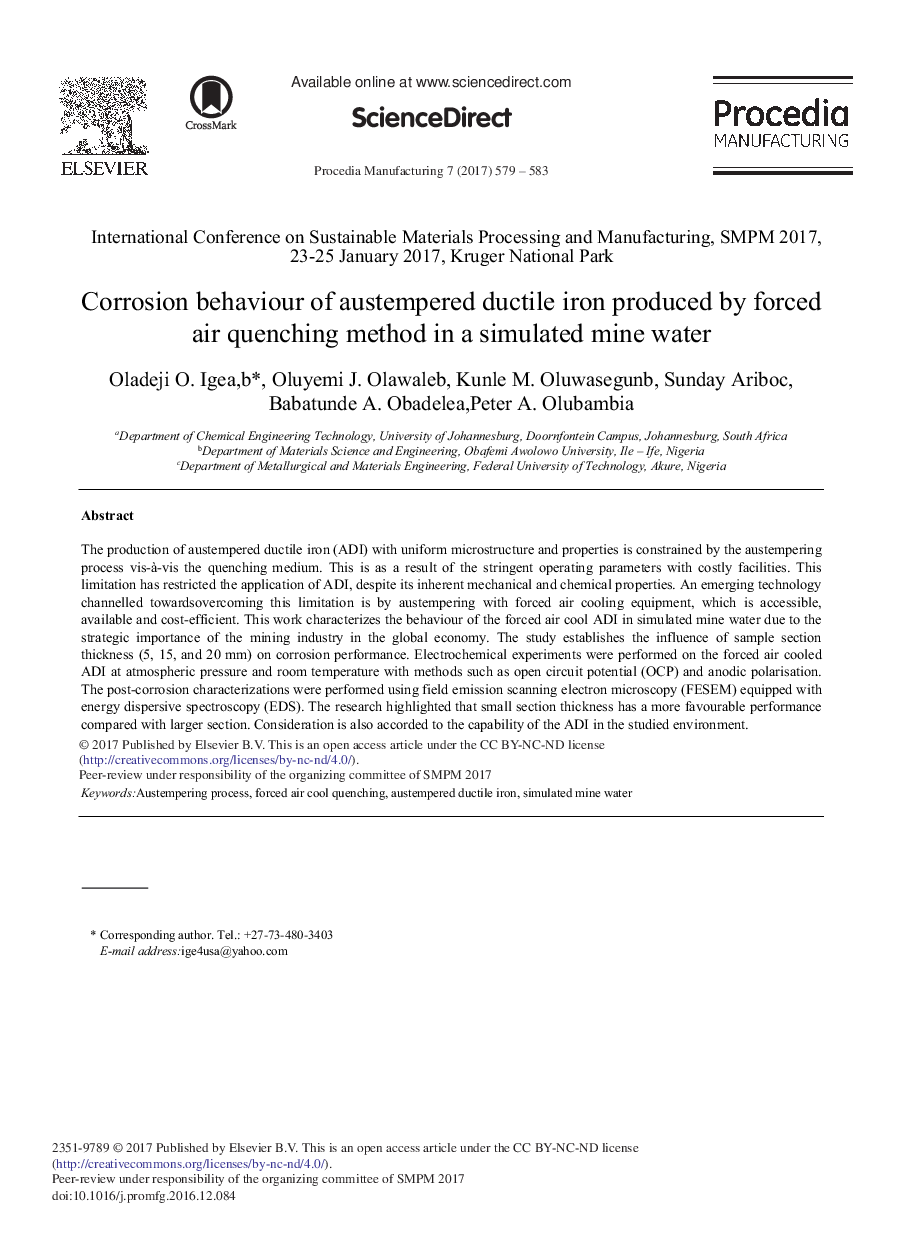| Article ID | Journal | Published Year | Pages | File Type |
|---|---|---|---|---|
| 5129212 | Procedia Manufacturing | 2017 | 5 Pages |
The production of austempered ductile iron (ADI) with uniform microstructure and properties is constrained by the austempering process vis-Ã -vis the quenching medium. This is as a result of the stringent operating parameters with costly facilities. This limitation has restricted the application of ADI, despite its inherent mechanical and chemical properties. An emerging technology channelled towardsovercoming this limitation is by austempering with forced air cooling equipment, which is accessible, available and cost-efficient. This work characterizes the behaviour of the forced air cool ADI in simulated mine water due to the strategic importance of the mining industry in the global economy. The study establishes the influence of sample section thickness (5, 15, and 20Â mm) oncorrosion performance. Electrochemical experiments were performed on the forced air cooledADI at atmospheric pressure and room temperature with methods such as open circuit potential (OCP) and anodic polarisation. The post-corrosioncharacterizations were performed using field emission scanning electron microscopy (FESEM) equipped with energy dispersive spectroscopy (EDS). The research highlighted that small section thickness has a more favourable performance compared with larger section. Consideration is also accorded to the capability of the ADI in the studied environment.
